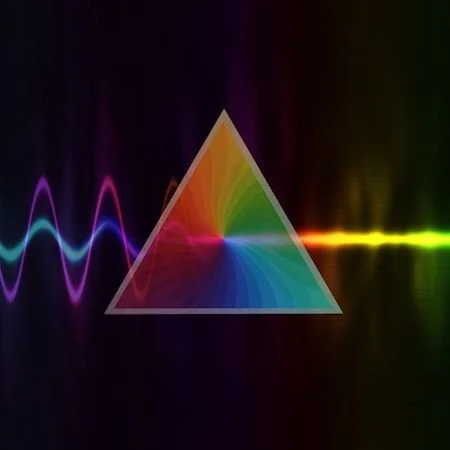The Nonlinear Crystal Experts Blog
Scholarly articles authored by scientific and engineering experts focused on laser reliability, performance, laser-induced-damage-threshold (LIDT), and deep UV applications in fields such as aerospace and quantum technologies.
Lithium Triborate, LiB3O5, or LBO-- all the same to me, but let's be friends, just call me LBO. I am an outstanding crystal for nonlinear optics, the best of my type. But why am I special, so special? It probably has something to do with the lithium. And, GAMDAN Optics has the best performing LBOs, period.
This article will concentrate on coatings applied by vacuum deposition, which gives durable reliable coatings. There are other techniques for reducing surface reflectivity such as sol-gel coatings or nano-structured surfaces.
Before light sources with considerable coherence length were available (think lasers), opticians formed fringe patterns using a test plate, also known as an optical flat. Spherical test plates also exist, to check the surface of lenses, or curved mirrors. These test plates could be placed in close proximity to each other, so common light sources could be used.
A practical way to generate UV light is by converting more easily obtained infrared or visible laser beams into the UV light using nonlinear optics--harmonic generation processes in crystals. This works well for producing light in nearly all of the UV A range (315 nm – 400 nm), the longest of the UV wavelengths. There are several crystals that can do this job...
A perfectly generated wave may be plano or spherical. What happens to it as it travels may alter that perfect shape. This circumstance is called wavefront distortion.
Tight control of crystal growth, sophisticated selection of material, near compulsive attention to detail in manufacturing and polishing combine with discriminating inspection practices to ensure that GAMDAN Optics products are free of transmissive wavefront errors.
Contamination can find its way onto all types of optics. UV light is generally more likely to break molecular bonds and cause damage than visible or infrared light. Contamination can make a good optic appear to have a low threshold for laser induced damage. Here we’ll explain a few types of contamination, and we’ll show what can be done to prevent contamination on UV optics.
Can the second harmonic generation be done efficiently with the right amount of peak power? In this article we will analyze what happens with lower peak power. For example, what if we run the same laser continuously (CW), so the average power might still be one Watt, but the peak power is now also now only one Watt. Can we efficiently generate the second harmonic of that CW beam? Read more and explore SGH with us…
Surface texture, also referred to as surface roughness, is an important parameter for many manufactured items. It can be measured on ground or machined surfaces and is especially significant for polished surfaces. The performance of optical elements and the processing from shaping, to grinding, to final polishing is largely influenced by surface roughness. The surface roughness at each step of fabrication is a result of the operation, the substrate properties, and the conditions of the machine to part interactions, with a little chemistry thrown in for good measure
The wave-like behavior of photons leads to interference between two wavefronts which may be constructive or destructive. Usually that interference is partial; there is not total destruction or canceling, nor doubling of intensity for constructive interference. The result is a pattern of lighter and darker regions. This pattern often presents itself as lines (straight or arcs) or as closed circles. In some cases they may be irregular, even jagged.
Optical fabrication operations such as grinding and polishing leave traces in the material below the surface being worked and while subsurface damage seems inevitable GAMDAN Optics has proven to minimize SSD. See the photos we took in our lab and the results.
This is the third in a series on OPOs from Gamdan Optics… With all the different types of OPOs, the choice of nonlinear crystal depends upon many factors: the desired beam powers, wavelengths, temporal profile (pulsed or CW), and other aspects of the OPO. The characteristics of all three beams (pump, signal, and idler) matter. The nonlinear crystal needs to transmit all the wavelengths. The crystal needs to provide a sufficiently strong nonlinear interaction between the beams—the crystal’s ability to support a strong nonlinear interaction is often characterized by a number, the nonlinear coupling coefficient.
OPOs can use a wide range of laser pump beams. The pump lasers can be continuous or pulsed. Pulsed pump lasers might have almost any pulse length, ranging from Q-switched lasers to mode-locked lasers. The OPO will generally produce output with a temporal profile similar to the pump laser. CW pumps drive CW OPOs; pulsed pumps drive pulsed OPOs.
An Optical Parametric Oscillator (OPO) is a light source, and a feature of optical parametric oscillators is wavelength flexibility. OPOs can deliver wavelengths that may be difficult or impossible to achieve with lasers. Not only can an OPO be built to work at a specified wavelength, but also many OPOs can be tuned--the user can scan the wavelength. In a laser, stimulated emission from an energized laser medium amplifies light. The laser medium is usually energized by a separate electrical or optical power source. An OPO is different…
Walkoff is different in different situations and with different materials. Second harmonic generation (SHG) and third harmonic generation (THG) can be accomplished in LBO and with other materials. For example, we could use one LBO SHG crystal and one LBO THG crystal. If we have beams with high peak powers then we can use short crystals. However to boost the efficiency of the THG process, we often want to make the crystals much longer. Read on for more about walkoff problems and compensation.
Suppose we send two beams of light, each with a different unique color, through a transparent crystal. The light in each beam can also have different polarizations. Furthermore, suppose that these two beams are incident upon the crystal at the same location and going in the exact same direction. Once in the crystal, will they continue to go in the same direction—equivalently, are they still angularly aligned? In this article, we will take a closer look into dispersion and walkoff and why it matters.
GAMDAN’s proprietary UV-grade superpolishing process (having achieved record setting Laser Induced Damage Threshold (LIDT)), and high LIDT coatings enable you to get the most out of your laser design, whether you generate doubled or tripled frequency light.
An interferometer is a device to make precise measurements using light. Modern interferometers often use laser light because the light is generally a discrete wavelength and the light beam can readily be collimated or expanded. The name is derived from utilizing the characteristic property of the wave-like nature of light to combine a light beam with another, or often with itself, to cause subtraction or addition to the intensity at a point (interference) measured (metered) by the instrument.
In the most general terms, laser induced damage is any undesirable degradation of the coating, surface, or bulk material which causes a loss of function, generally to an optical element, and results from exposure to a laser beam. Laser damage, on the other hand, is what happens when you drop your laser or leave it out in the rain. But "laser damage" is often verbal shorthand for laser induced damage. We will stick with the more precise term here.
Beta Barium Borate is an exceptional nonlinear crystal. Its chemical formula is BaB₂O₄. BBO is a negative uniaxial crystal, which is capable of phase matching for second-order photonic interactions over almost its entire transparency range (from the UV, 185 nm to the Near Infrared, 3.5 µm).
GAMDAN uses the highest quality hydrothermally grown KTP. It is characterized by low absorption, and resistance to gray tracking (photochromic damage) in high power applications. There is a much cheaper form of KTP which is not suited for high energy lasers. It is grown by the flux method. If you have a green laser pointer in your pocket, it most likely has a chip of flux grown KTP. Find out more about GAMDAN’s KTP offerings and why we have the most superior KTP available for your applications.




















The details of a coating design involve the thickness and material choice for each coating layer. This affects the optical field intensity distribution within the coating, and that affects the laser induced damage threshold (LiDT). The choice of coating materials also affects the thermal expansion mismatch between the coating and the substrate, a factor that affects coating adhesion and coating cracking or crazing.